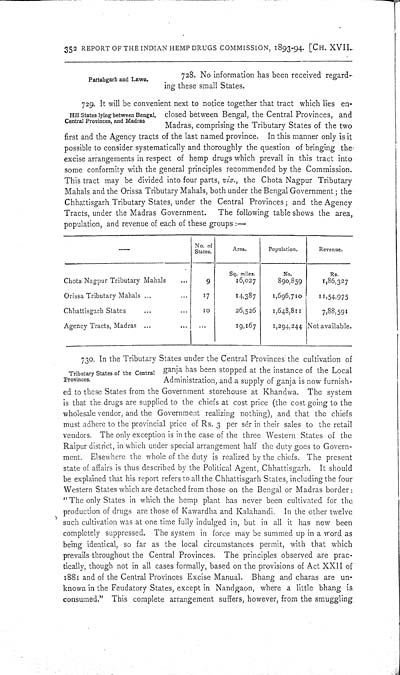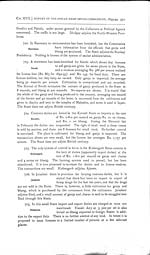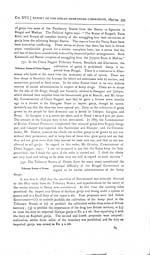Medicine - Drugs > Report of the Indian Hemp Drugs Commission, 1894-1895 > Volume I
(387) Page 352
Download files
Individual page:
Thumbnail gallery: Grid view | List view

352 REPORT OF THE INDIAN HEMP DRUGS COMMISSION, 1893-94. [CH. XVII.
Partabgarh and Lawa.
728. No information has
been received regard-
ing these small States.
Hill States lying between
Bengal,
Central Provinces, and Madras.
729. It will be
convenient next to notice together that tract which lies en-
closed between Bengal, the Central Provinces, and
Madras, comprising the Tributary States of the two
first and the Agency tracts of the last named province. In this
manner only is it
possible to consider systematically and thoroughly the question of
bringing the
excise arrangements in respect of hemp drugs which prevail in this
tract into
some conformity with the general principles recommended by the
Commission.
This tract may be divided into four parts, viz., the Chota
Nagpur Tributary
Mahals and the Orissa Tributary Mahals, both under the Bengal
Government; the
Chhattisgarh Tributary States, under the Central Provinces; and the
Agency
Tracts, under the Madras Government. The following table shows the
area,
population, and revenue of each of these groups:—
|
No. of |
Area. |
Population. |
Revenue. |
|
|
Sq. miles. |
No. |
Rs. |
||
|
Chota Nagpur Tributary Mahals |
9 |
16,027 |
890,859 |
1,86,327 |
|
Orissa Tributary Mahals |
17 |
14,387 |
1,696,710 |
11,54,975 |
|
Chhattisgarh States |
10 |
26,526 |
1,648,811 |
7,88,591 |
|
Agency Tracts, Madras |
19,167 |
1,294,244 |
Not available. |
Tributary States of the
Central
Provinces.
730. In the Tributary
States under the Central Provinces the cultivation of
ganja has been stopped at
the instance of the Local
Administration, and a supply of ganja is now furnish-
ed to these States from the Government storehouse at Khandwa. The
system
is that the drugs are supplied to the chiefs at cost price (the
cost going to the
wholesale vendor, and the Government realizing nothing), and that
the chiefs
must adhere to the provincial price of Rs. 3 per sér in their sales
to the retail
vendors. The only exception is in the case of the three Western
States of the
Raipur district, in which under special arrangement half the duty
goes to Govern-
ment. Elsewhere the whole of the duty is realized by the chiefs.
The present
state of affairs is thus described by the Political Agent,
Chhattisgarh. It should
be explained that his report refers to all the Chhattisgarh States,
including the four
Western States which are detached from those on the Bengal or
Madras border:
"The only States in which the hemp plant has never been cultivated
for the
production of drugs are those of Kawardha and Kalahandi. In the
other twelve
such cultivation was at one time fully indulged in, but in all it
has now been
completely suppressed. The system in force may be summed up in a
word as
being identical, so far as the local circumstances permit, with
that which
prevails throughout the Central Provinces. The principles observed
are prac-
tically, though not in all cases formally, based on the provisions
of Act XXII of
1881 and of the Central Provinces Excise Manual. Bhang and charas
are un-
known in the Feudatory States, except in Nandgaon, where a little
bhang is
consumed." This complete arrangement suffers, however, from the
smuggling
Set display mode to: Large image | Zoom image | Transcription
Images and transcriptions on this page, including medium image downloads, may be used under the Creative Commons Attribution 4.0 International Licence unless otherwise stated. ![]()
| India Papers > Medicine - Drugs > Report of the Indian Hemp Drugs Commission, 1894-1895 > Volume I > (387) Page 352 |
|---|
| Permanent URL | https://digital.nls.uk/74574840 |
|---|---|
| Description | Chapter XVII, cont. |
| Description | [Volume 1]: Report. |
|---|---|
| Attribution and copyright: |
|




